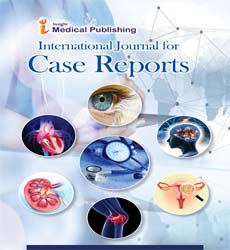Editorial on Heart Failure
Lahiru Jayakody*
1Department of Biosience and Biotechnology, National Renewable Energy Laboratory, Colorado, USA
- *Corresponding Author:
- Lahiru Jayakody Department of Bioscience and Biotechnology, National Renewable Energy Laboratory, Colorado, USA E-mail: jayalahiru@yahoo.co.edu
Received Date: June 8, 2021; Accepted Date: June 22, 2021; Published Date: June 29, 2021
Citation: Jayakody L (2021) Editorial on Heart Failure. Int J Case Rep Vol.5 No.4: e050
Abstract
The effects of heart failure on the contractile characteristics of human myocardium from the left and right ventricles were investigated in this study.
Editorial Note
The effects of heart failure on the contractile characteristics of human myocardium from the left and right ventricles were investigated in this study. Maximum force and maximum power were lowered by around 30% in multicellular preparations from both ventricles, probably due to ventricular remodeling, according to the findings. Heart failure with a reduced ejection fraction is a severe condition with high morbidity, death, and societal costs. Significant advances in the pharmacologic management of HFrEF have resulted in a reduction in morbidity and death over the last three decades. Heart failure is still a leading cause of death and morbidity in the United States, as well as a major consumer of health-care resources. Changes in excitation-contraction coupling, cardiac energy deficit, and oxidative stress are all symptoms of heart failure, which is a major health problem around the world. While most current treatments focus on inhibiting neuroendocrine activity, new evidence suggests that targeting metabolism may also provide significant prognostic benefit. The significant link between heart failure and established risk factors such as physical inactivity and low fitness emphasises the necessity of regular physical activity and exercise for heart failure prevention and therapy. This is exemplified by heart stiffness, which occurs more frequently in middle age and can be reversed with aerobic activity. The balance of pro- and antioxidant molecules has been identified as a key factor in the development of cardiovascular disease. Chronic heart failure is linked to oxidative stress both in the myocardium and throughout the body. In the United States, heart failure is the primary cause of adult hospitalisation. However, little is known about the impact of nurse-led interprofessional collaborative practise in a heart failure group that is underserved. The goal of this study was to see how a structured education offered by a certified heart failure nurse affected patients' self-care behaviour and disease awareness in the short and long term. Estimating the risk distribution of heart failure could help with focused prevention. In South Asian Americans, we calculated the distribution of 10-year predicted risk of incident HF and looked at the relationships with social determinants of health and clinical risk factors. Dilated cardiomyopathy in children is a rare condition. Despite major surgical and medicinal improvements, dilated cardiomyopathy still has a high rate of morbidity and mortality. It is still the most common reason for a paediatric heart transplant. Studies are generally used to extrapolate current medical care. In the adult and paediatric populations, the cause of dilated cardiomyopathy, the co-morbidity profile, and the response to medicines are all dramatically different. In older individuals with heart failure, no research has been done to see if cognitive impairment can provide additional prognostic information beyond that provided by previous prognostic variables. In individuals with chronic cardiac failure, atrial fibrillation is frequent, and some have advocated for aggressive rate and/or rhythm management techniques. The loss of atrial systole and ventricular response irregularities, on the other hand, has not been shown to contribute to the advancement of heart failure.
Open Access Journals
- Aquaculture & Veterinary Science
- Chemistry & Chemical Sciences
- Clinical Sciences
- Engineering
- General Science
- Genetics & Molecular Biology
- Health Care & Nursing
- Immunology & Microbiology
- Materials Science
- Mathematics & Physics
- Medical Sciences
- Neurology & Psychiatry
- Oncology & Cancer Science
- Pharmaceutical Sciences
